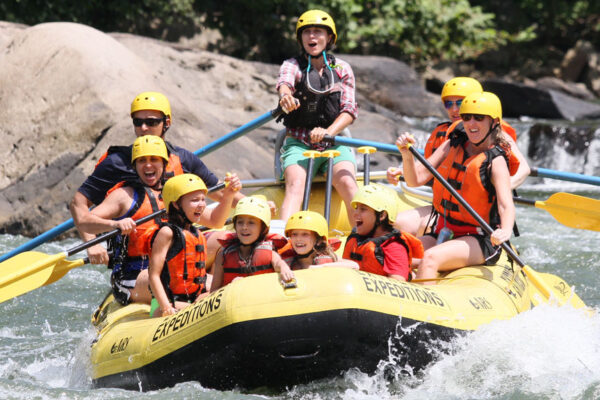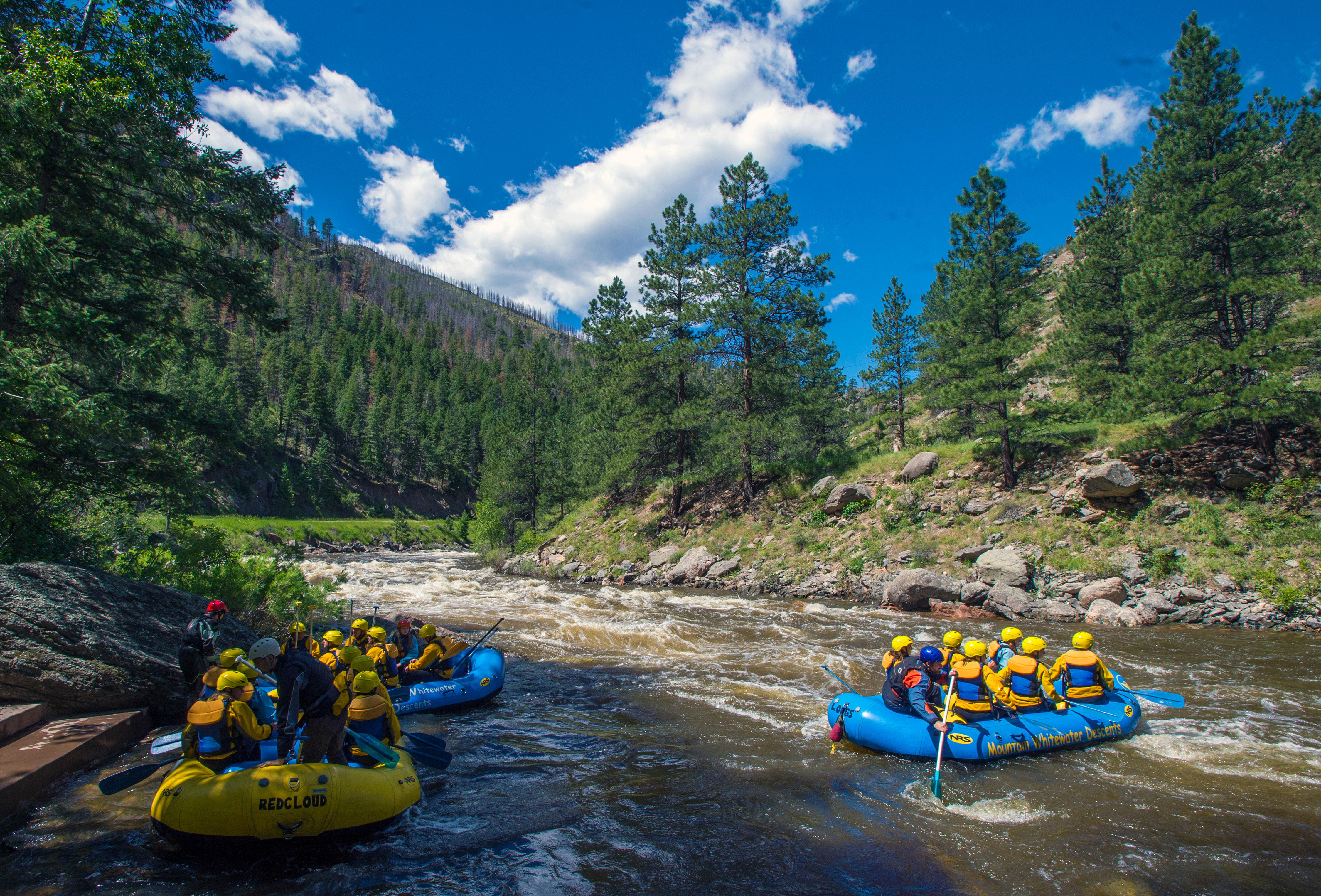Essential Skills for Water Rafting
Mastering the art of water rafting requires a mix of specific abilities and knowledge to navigate the unforeseeable currents of rivers, making it a thrilling yet possibly unsafe activity. From understanding the complexities of river characteristics to swiftwater rescue strategies and smooth team communication, the journey down the river requires a mix of expertise and flexibility. White Water Rafting Colorado.
Paddling Techniques
Mastering reliable paddling strategies is critical for navigating water boatings safely and effectively. One fundamental strategy is the forward stroke, where paddlers dip the blade completely into the water and draw it back along with the plethora to produce propulsion.
Apart from the forward stroke, the draw stroke is important for making fast changes or pulling the plethora more detailed to an item. By placing the paddle blade vertical to the water's surface area and pulling the water in the direction of the boating, paddlers can efficiently change the vessel's instructions. The backstroke offers as an important device for backing up or slowing down the plethora when needed.
River Reading
Reliable paddling techniques, such as the forward stroke and attract stroke, play an important duty in navigating and analyzing river currents, a skill called river analysis. River reading involves the capability to assess the rate, deepness, and direction of the water circulation to make informed choices while navigating rapids. By comprehending exactly how the water walks around obstacles and with various channels, rafters can select the very best course to securely go across the river.
Eddies, for instance, are locations where the water moves in a circular motion, commonly providing opportunities for rest or strategic maneuvers. Hydraulics, typically understood as "openings," are locations where water recirculates back upstream, posturing possible threats to plethoras.
Mastering the skill of river reading is vital for risk-free and satisfying rafting experiences, enabling paddlers to navigate tough waters with self-confidence and accuracy.

Swiftwater Rescue
Recognizing swiftwater rescue strategies is important for water rafting fanatics to react effectively in emergency circumstances on fast-flowing rivers. Swiftwater rescue includes a set of specialized skills and understanding targeted at securely removing people from swift-moving water. One key element of swiftwater rescue is acknowledging the threats existing in fast-flowing rivers, such as filters, undercut rocks, and solid currents, to plan and perform successful rescue operations.
Proper devices is vital for swiftwater rescue, including toss bags, rescue ropes, helmets, and personal flotation devices. Rafting enthusiasts must be skilled at utilizing this devices in high-stress circumstances to make sure the security of themselves and others. Furthermore, swiftwater rescue techniques commonly include team effort and sychronisation among rafters to execute intricate rescue maneuvers effectively.
Training in swiftwater rescue is very advised for people engaging in water rafting activities, as it furnishes them with the essential abilities to manage emergencies swiftly and effectively. White Water Rafting Colorado. By exercising and understanding swiftwater rescue techniques, water rafting lovers can boost their safety and that of their fellow rafters on tough river expeditions
Team Communication
Reliable team effort in water rafting relies greatly on smooth communication among staff member to guarantee coordinated and secure navigation through tough river conditions. Clear and concise communication is critical for the success of any type of rafting expedition. more info here Group participants need to have the ability to properly communicate important info such as paddling commands, warning signals, and navigational guidelines.
In the typically unpredictable and hectic environment of river rafting, accurate and punctual communication can indicate the distinction between a successful run and a possible calamity - White Water Rafting Colorado. Each employee plays an important duty in the overall communication procedure, whether it be listening attentively to the overview's guidelines, communicating details to visit here various other paddlers, or signaling for support when required
Developing a common language and communication system before striking the water is important. This makes sure that everybody gets on the same page and recognizes just how to communicate efficiently throughout the rafting journey. By fostering a culture of open interaction and common regard, rafting teams can enhance their efficiency and safety on the river.

Security Procedures
In the context of water rafting, the structure of group communication established during explorations is more enhanced via rigid adherence to safety procedures. Safety and security procedures are paramount in making certain the well-being of both rafters and guides during water rafting expeditions.
An additional secret safety and security protocol is the comprehensive briefing provided by guides before beginning on a rafting journey. This instruction typically consists of details on paddling strategies, what to do in instance of different emergencies, and signals utilized for communication during the journey. It is crucial to have designated safety and security kayakers coming with the team to supply instant support if needed. By purely sticking to these security procedures, water rafting excursions can be both risk-free and exhilarating for all participants included.
Conclusion
To conclude, grasping essential abilities for water rafting is essential for a secure and satisfying experience on the river. Paddling methods, river analysis, swiftwater rescue, team interaction, and security protocols are all important components that add to a successful rafting journey. By developing these abilities, rafters can navigate tough waters with confidence and make sure the safety of themselves and their image source employee.
Understanding the art of water rafting requires a combination of specific skills and knowledge to navigate the uncertain currents of rivers, making it a thrilling yet potentially harmful task. By placing the paddle blade perpendicular to the water's surface and pulling the water towards the plethora, paddlers can effectively alter the vessel's instructions.Understanding swiftwater rescue techniques is vital for water rafting enthusiasts to respond successfully in emergency situation scenarios on fast-flowing rivers.Effective team effort in water rafting relies heavily on seamless communication amongst group participants to ensure collaborated and risk-free navigating via challenging river conditions.In conclusion, understanding necessary skills for water rafting is essential for a delightful and safe experience on the river.